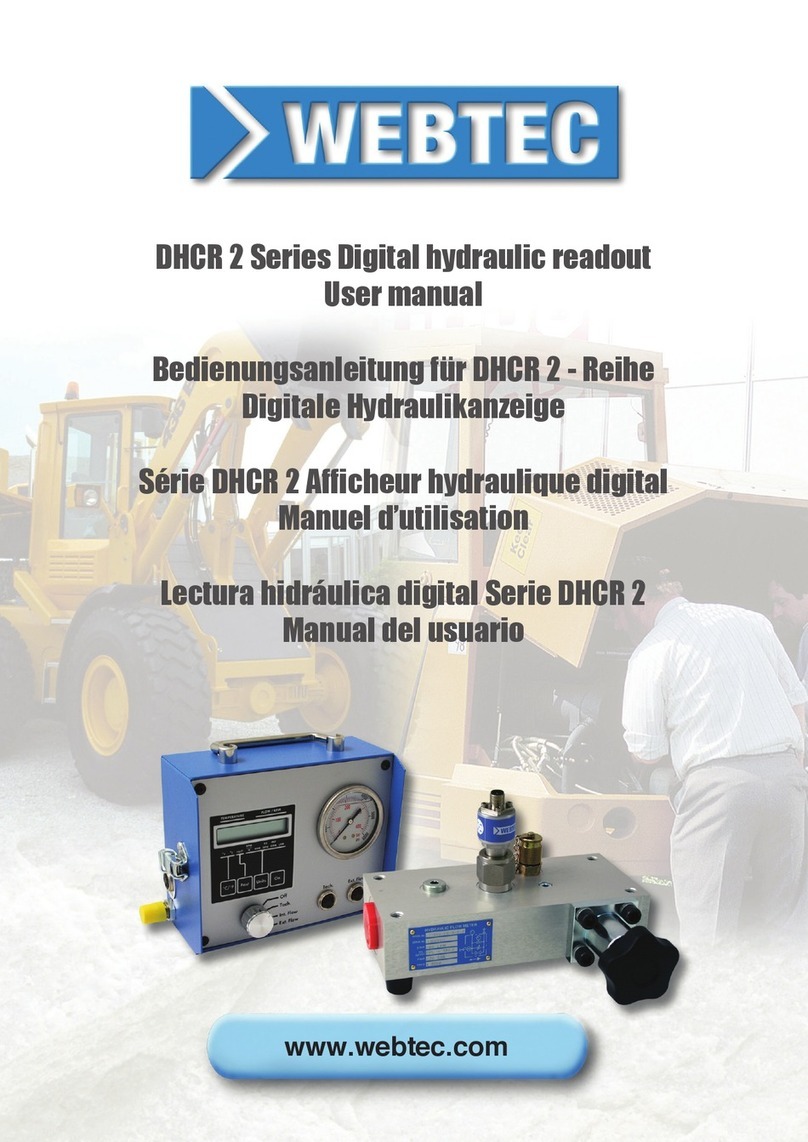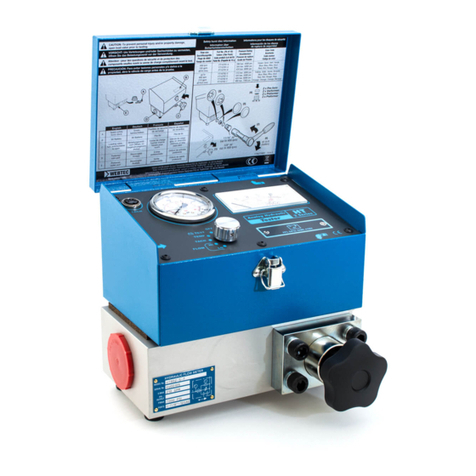
1
Introduction
DH Series Digital Portable Hydraulic Testers have been designed for easy connection to a
hydraulic circuit so that flow, pressure and temperature can be readily checked. To facilitate
easy operation all common engineering units can be selected and the display update time can
be varied. Testers can take full back pressure up to 350/420 bar (depending on model) and the
built-in loading valve enables many of the operating conditions to be simulated. The tester can
be connected anywhere in the hydraulic system to test pumps motors, valves and cylinders in
both flow directions.
Bi-Directional Flow Testing
1. The loading valve gives smooth control of pressure in both flow directions and is protected
in both flow directions by two replaceable safety discs which are designed to rupture at
approximately 7 bar (100 psi) over the maximum working pressure. When these discs
rupture the oil by-passes the loading valve at low pressure and continues to flow freely
through the hydraulic system. A range of pressure safety discs are available to protect both
the tester and other components in the hydraulic system.
2. Although the bi-directional tester can be used in both flow directions, the preferred direction
is indicated by IN and OUT on the tester block. When the tester block is used for reverse
flow tests, slightly lower accuracies may be obtained depending on the oil viscosity, density
and compressibility.
3. The tester should be connected to the hydraulic circuit by means of flexible hoses, DHT
1 - 2 metre long and DHCR 1/4 metre long. The use of quick-disconnect couplings can save
time. Make sure the hoses are long enough so that the tester can be used conveniently on
the machine. The hoses and fittings at the inlet to the tester must be of adequate size for
the flow being tested. Elbows, rotary couplings etc., at the inlet and outlet ports of the tester
should be avoided to ensure accurate readings.
4. With the DHCR Testers connect the cable and micro-bore hose assembly at the readout
then connect to the flow block. IMPORTANT, after testing, disconnect at the flow block first
to avoid oil spillage.
5. On the DHT Testers the use of the flexible hoses will help to isolate the test unit from
vibration which often exists, DHCR Testers may be connected with rigid pipes.
6. After installing the Tester it is important to ensure that all connections are tightened and the
oil can flow freely throughout the hydraulic system BEFORE running the machine at full
speed. Check that the circuit is correctly connected and any shut-offvalves are opened,
also quick disconnect couplers MUST be open. IMPORTANT start the pump momentarily
to ensure there is no obstruction which could cause pressure build up.
7. When using the DHCR or an external flow block with the DHT Testers ensure that the
appropriate calibration factor is entered. See section on PROGRAMMING for details.
8. Testers have an automatic electronic system which shuts the power off after approximately
15 minutes should you forget. To reactivate the tester, press the “ON” KEY.






























